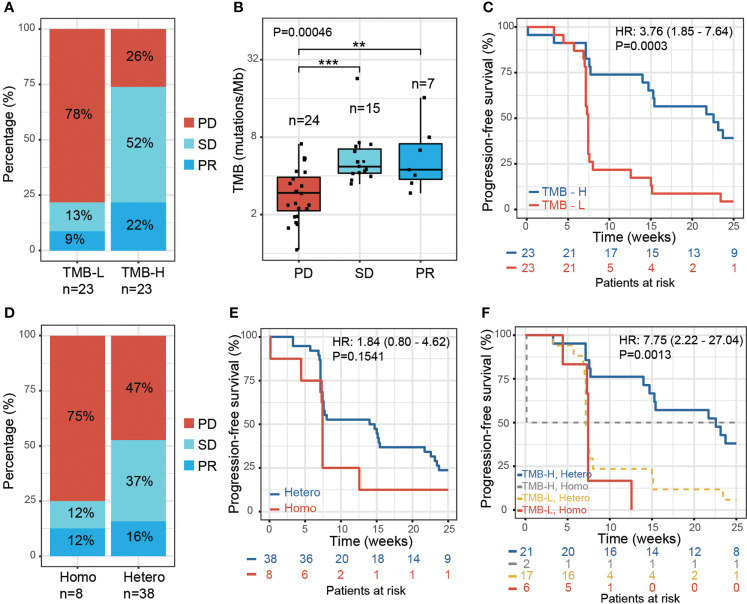Figure 1.
Effect of tumor mutation burden and HLA-I heterozygosity on survival after anti-PD-1 treatment. (A) The percentage of PR, SD and PD in patients with low TMB (TMB-L, TMB < 4, n=23) and high TMB (TMB-H, TMB > 4, n=23). (B) A boxplot of tumor mutation burden for PD (n=24), SD (n=15) and PR (n=7) patients, P values were calculated using the Kruskal-Wallis test. Asterisks denote pairwise group comparisons by Dunn’s test (**P<0.01; ***P<0.001). (C) Progression-free survival analysis of patients with high and low tumor mutation burden. (D) The percentage of PR, SD and PD in the patients with homozygosity in at least one HLA-I locus (Homo, n=8) and with heterozygosity at all HLA-I loci (Hetero, n=38). (E) Progression-free survival analysis of patients with homozygosity compared with heterozygosity in the HLA-I allele. (F) Progression-free survival analysis of patients with high tumor mutation burden and heterozygosity at all HLA-I loci (TMB-H, Hetero, n=21) compared with patients that have low tumor mutation burden and are homozygous for at least one HLA-I locus (TMB-L, Homo, n=6).

